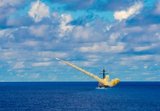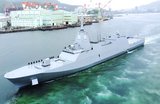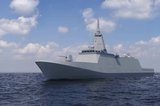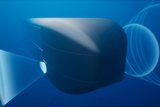USN picks partner for third-party planning
Q.E.D. Systems has received a $76.36 million cost-plus-fixed-fee contract from Naval Sea Systems Command for third-party planning services on USN guided missile cruisers, guided missile destroyers, landing helicopter assault ships, landing helicopter dock landing platforms, and dock landing ship vessels.
Work will be performed in Norfolk, Virginia; San Diego, California; and Everett, Washington State, for completion by October 2023.
The deal will be worth $229.41 million if all options are exercised.
‘This single-source contract to Q.E.D. will allow the government additional time to conduct extensive market research in preparation for a follow-on competitive effort,’ the DoD noted on 28 October.
As part of our promise to deliver comprehensive coverage to our Defence Insight and Premium News subscribers, our curated defence news content provides the latest industry updates, contract awards and programme milestones.
More from Naval Warfare
-
![NATO tests use of “undetectable, jam-proof” laser communication in maritime scenarios]()
NATO tests use of “undetectable, jam-proof” laser communication in maritime scenarios
As part of its effort to better prepare its capabilities for operations in contested and congested scenarios, NATO evaluated a Lithuanian ship-to-ship terminal designed to not be susceptible to enemy interference.
-
![Future of the Canadian Patrol Submarine Project is still unclear]()
Future of the Canadian Patrol Submarine Project is still unclear
The Canadian government remains tight-lipped on the timeline and funding required for the next steps of its Canadian Submarine Patrol Project, which should offer improved capabilities for the country’s navy.
-
![Mitsubishi eyes future with Australia’s Mogami selection]()
Mitsubishi eyes future with Australia’s Mogami selection
With Australia’s selection of the Mogami-class for Project Sea 3000, Mitsubishi is investigating local production in the next decade as potential export opportunities emerge.
-
![Thales’ new Sonar 76Nano could equip UK Royal Navy on anti-submarine warfare missions]()
Thales’ new Sonar 76Nano could equip UK Royal Navy on anti-submarine warfare missions
The new sonar is designed to equip uncrewed underwater vessels, with the potential to be used by the Royal Navy for its Atlantic Bastion and Atlantic Net missions.























